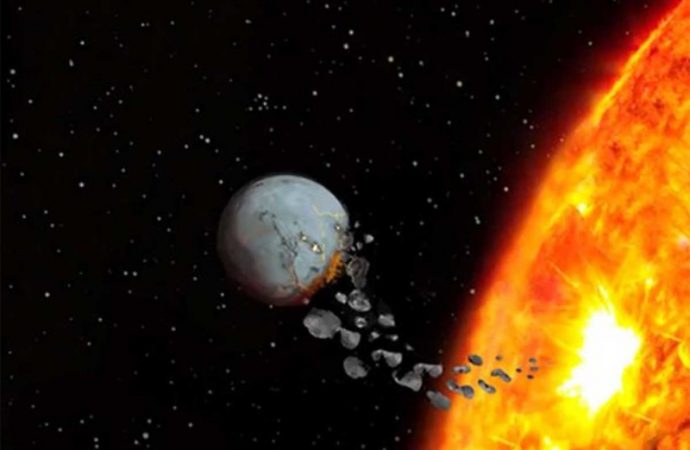Consuming a metal rich planet in it’s early life, stars can change color.
star is what it eats. Consuming a planet or two early in its life may explain why some young stars are iron-rich – and those habits can change its colour.
Last year, a team of scientists led by Lorenzo Spina of the University of São Paulo, Brazil, suggested a young, particularly iron-rich star may have gotten its metals from eating a planet early in its development.
Now, Emanuele Tognelli and Pier Giorgio Prada Moroni of the University of Pisa, Italy, have shown how that star’s planet-eating habits can change its colour.
The pair used computer simulations to compare what happens when planets of various sizes – from Earth-like to 50 times more massive – get enveloped by the outer layer of a young star. This showed that swallowing one or more planets containing iron is enough to change the chemical make-up of the star, giving it a reddish tint.
“The main effect of the planet ingestion is to increase the metal content in the outer region of the star,” the researchers told New Scientist. The metals absorb light in shorter, bluer wavelengths, making its red hues more prominent.
Hungry stars
It’s similar to how flamingos become pinker with every pigment-rich shrimp they slurp – but on a solar scale.
Since this happens early on in a star’s evolution, it’s hard to say if more mature stars had planet-eating habits in their youth. But it’s possible that our sun ate one or more planets long ago, say Tognelli and Prada Moroni.
Spina says the study did a good job of simulating what happens to small stars that eat planets. “The model is excellent,” he says. “It takes into account all the effects produced by such a dramatic event.”
There’s still much more to learn, though. “We do not know if stars often ingest planets,” Spina says. And since a star gulps a planet down quickly, it’s probably a tricky event to watch in real time. “The change in colour due to a planet engulfment episode has not been observed yet, and probably is still difficult to spot,” he says.
Source: New Scientist

































Leave a Comment
You must be logged in to post a comment.